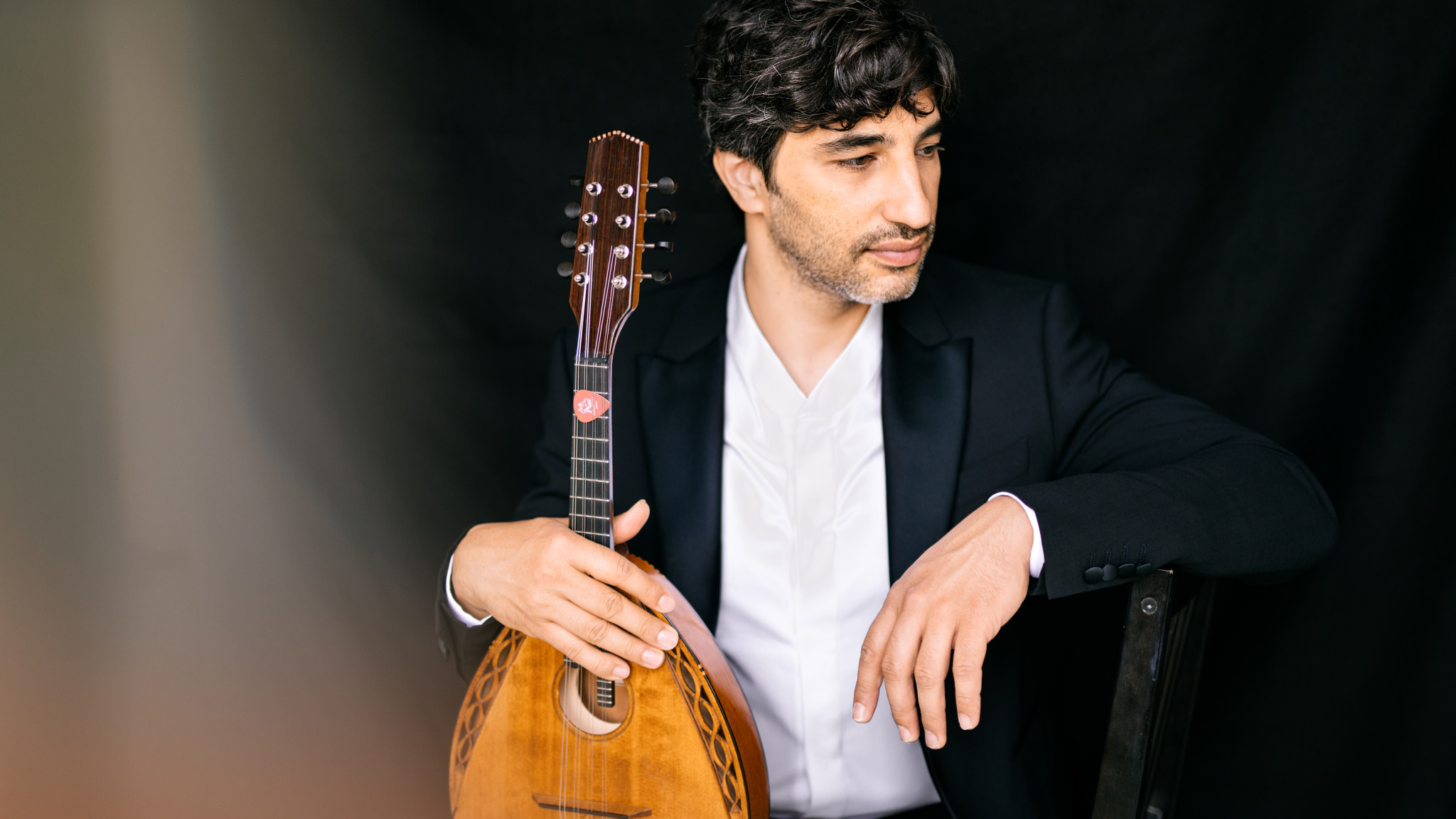Avi Avital – Art of the Mandolin

We announce the new album release of the Israeli musician Avi Avital today. ‘Art of the Mandolin’ is a celebration of the mandolin and its diverse repertoire, offering a guided tour of the instrument’s rich history and a star performer’s personal selection of some of its greatest compositions. However, as Avital comments: “This is not an introduction to the mandolin. It’s the essence of the mandolin.”
It is the first time Avital has made an album where the entire repertoire was originally written for the mandolin. He was joined for the recording by the Venice Baroque Orchestra, harpist Anneleen Lenaerts, guitarist Sean Shibe, harpsichordist Yizhar Karshon and theorbo player Ophira Zakai.
‘Art of the Mandolin’ marks a major milestone in the history of the instrument and its repertoire. It also underlines the contribution made by a remarkable musician to broadening the mandolin’s appeal. “When I started playing classical repertoire in concert halls almost twenty years ago, my instrument was a curiosity,” Avi Avital recalls. “To include it in important concert programmes, the case had to be made time and again that the mandolin deserves an audience.” Having now played in almost every major concert hall and with many of the world’s leading orchestras, Avital has made the mandolin an integral part of the classical scene.
The album includes a concerto by Vivaldi, a sonata by Domenico Scarlatti, Beethoven’s exquisite yet little-known Adagio ma non troppo for mandolin and harpsichord (or harp), and more recent chamber and solo works by Paul Ben-Haim, Hans Werner Henze, Giovanni Sollima and David Bruce. The programme not only reveals the versatility of this instrument but allows glimpses of its fascinating history over the last three centuries. Avital has specifically chosen music by composers not known for their mandolin works: “I wanted to explore what the instrument meant, and means, in the wider world – to composers who are, as it were, coming to it from the outside rather than the inside.”
‘Art of the Mandolin’ begins by celebrating the instrument’s Italian heritage with Vivaldi’s Concerto for two mandolins, strings and continuo in G major RV 532 – a playful work that reflects the eighteenth-century Venetian view that the mandolin had moved on from its courtly Renaissance origins to become a folk instrument or one played by amateur musicians. Another early work is Scarlatti’s virtuosic Sonata in D minor K 89, one of five such pieces he is thought to have written for mandolin – was he perhaps bowing to the inevitable in writing for an instrument that had become so closely identified with his native city of Naples?
By contrast, Beethoven’s surviving mandolin works are, in Avital’s words, “little love letters”: all four were dedicated to Josephine of Clary-Aldringen. By the late eighteenth century, the mandolin had made its way back into noble and bourgeois salons, although, as Avital notes, “These are not the most difficult pieces in the repertoire … while the harpsichord part is really rather virtuosic – maybe [Beethoven was] trying to impress her.” Here the harpsichord is replaced by harp, another instrument commonly heard in the salons of the day.
Moving into the twentieth century, Avital has chosen works by Hans Werner Henze and Paul Ben-Haim, both of whom, he says, “imagined a plucked string trio as the equivalent of string quartet or woodwind quintet”. He calls Henze’s Carillon, Récitatif, Masque for mandolin, guitar and harp a “sonic playground” full of fresh, new sounds, while Ben-Haim’s Sonata a tre for mandolin, guitar and harpsichord (reconstructed by Avital), fuses the classical idiom with elements of Middle Eastern music, including the sonorities of ancient instruments such as the oud, or the Persian tar and santur.
Demonstrating the mandolin’s enduring popularity and ability to inspire the most diverse responses from composers, the album also includes the world premiere recordings of two recent works written to commissions from Avital: the perhaps unexpectedly life-affirming Death is a Friend of Ours for mandolin, guitar, theorbo, harp and harpsichord, written in 2018 by British composer David Bruce, and Sicilian cellist and composer Giovanni Sollima’s folk-inspired Prelude for solo mandolin, which transports us back to the instrument’s Italian and Mediterranean roots.
These are just two of around 100 new pieces that Avi Avital has commissioned in the last fifteen years – it was the discovery of Ben-Haim’s unfinished Sonata a tre in the National Archives in Jerusalem when he was still studying at the city’s Music Academy that initially inspired him to approach contemporary Israeli composers for new works. Having played the mandolin since childhood, but in arrangements of music written for the violin, it was primarily after moving to Italy to study with Ugo Orlandi when he was in his early 20s that Avital began to learn more about the history of the instrument and the riches of its original repertoire.
Since then, as well as enriching the mandolin literature with arrangements of works written for other instruments and rescuing many fine original pieces from obscurity, Avi Avital has done the instrument immeasurable service by commissioning dozens of new works. “It has been one of the joys of my life,” he says, “to continue the process of creating a repertoire for the instrument that showcases just how much it has to offer.” And the kaleidoscopic wealth of that repertoire is captured to perfection on ‘Art of the Mandolin’.
